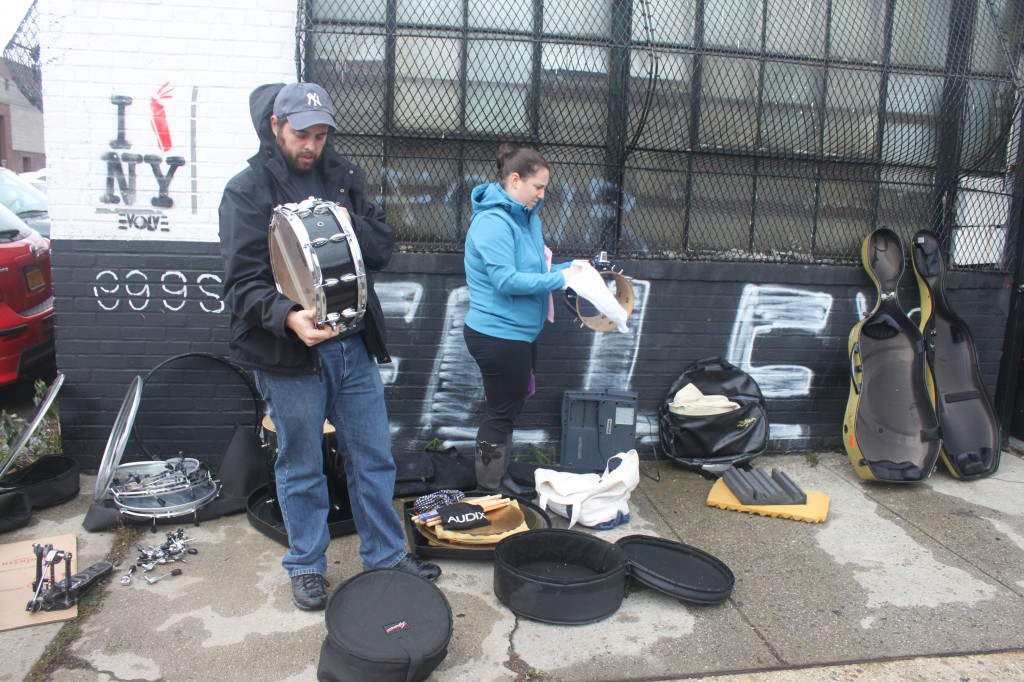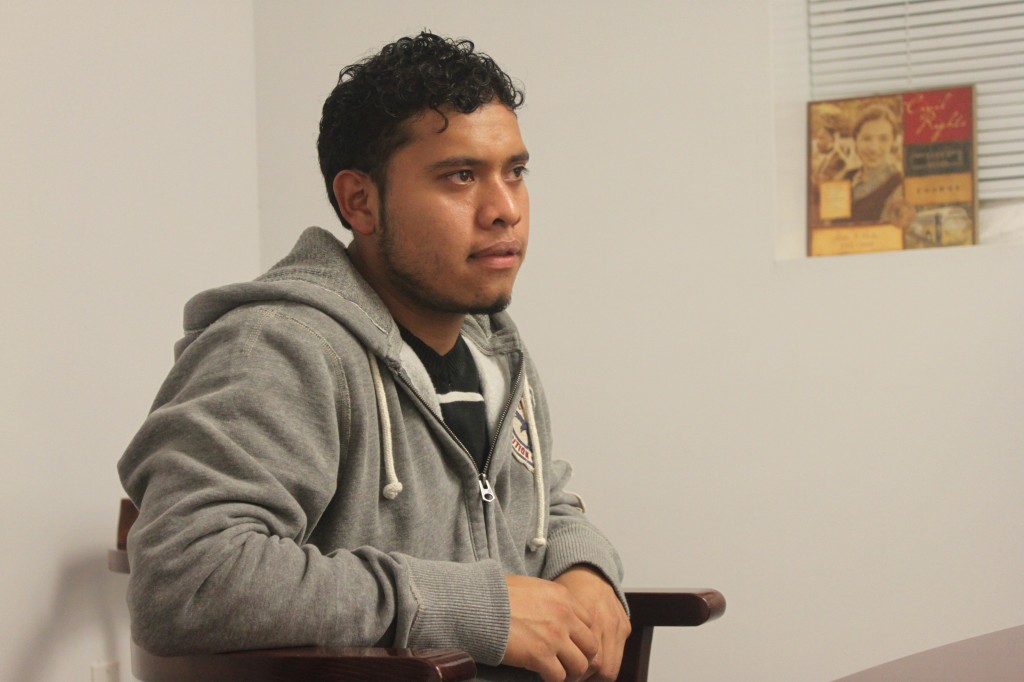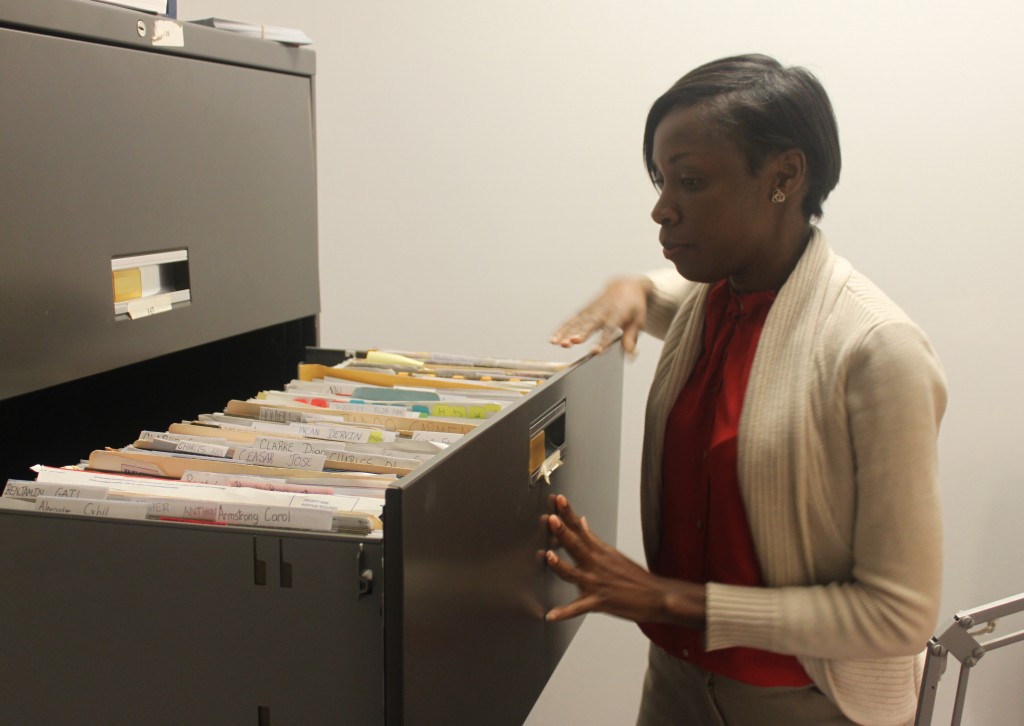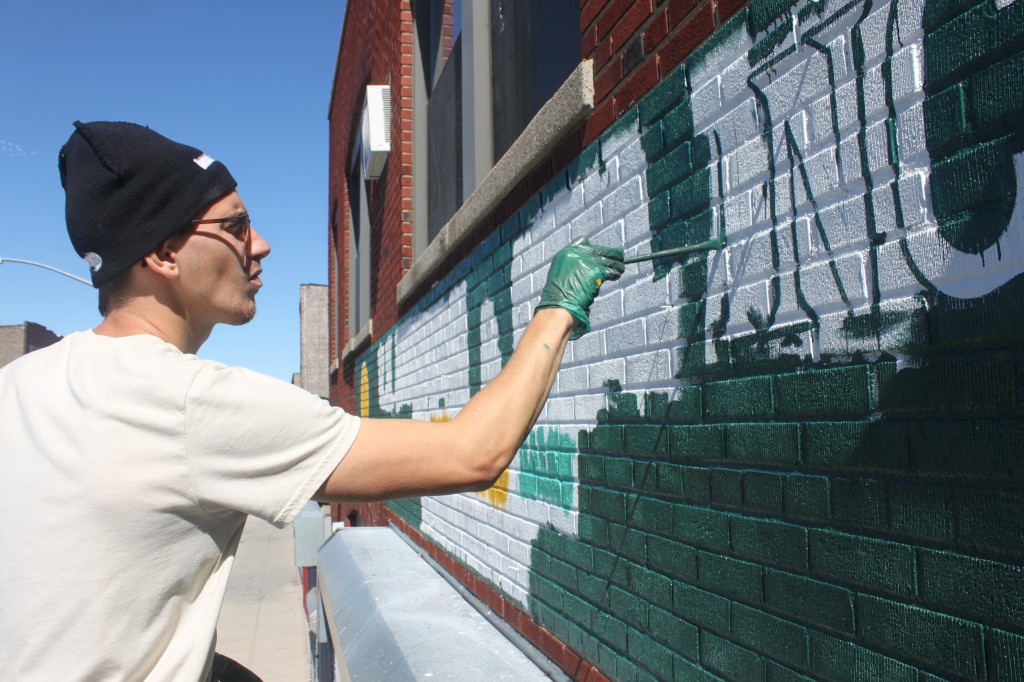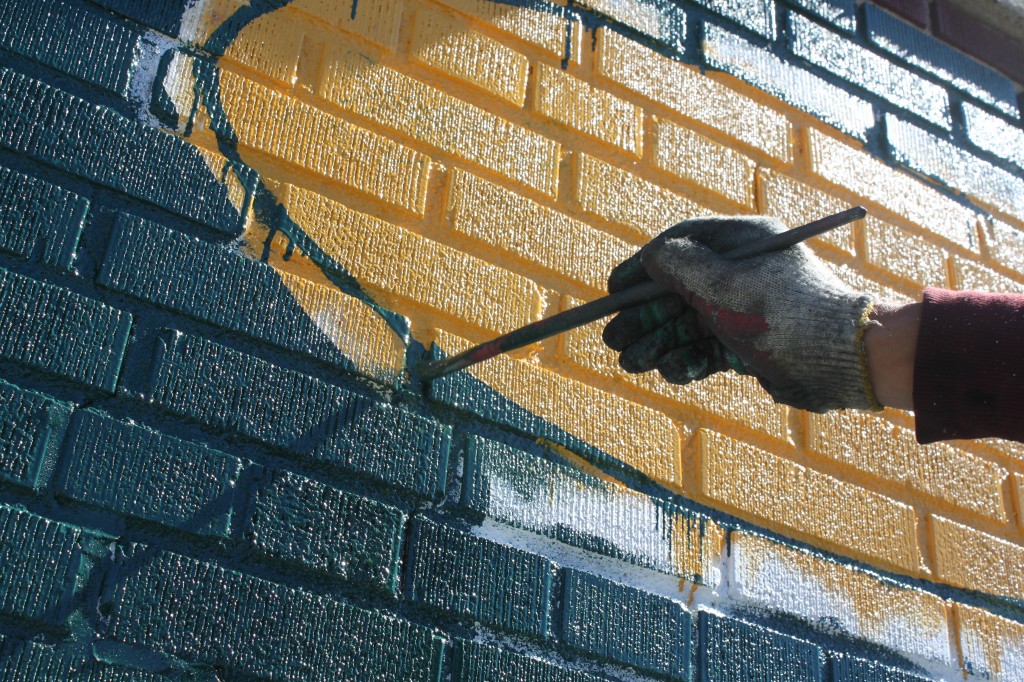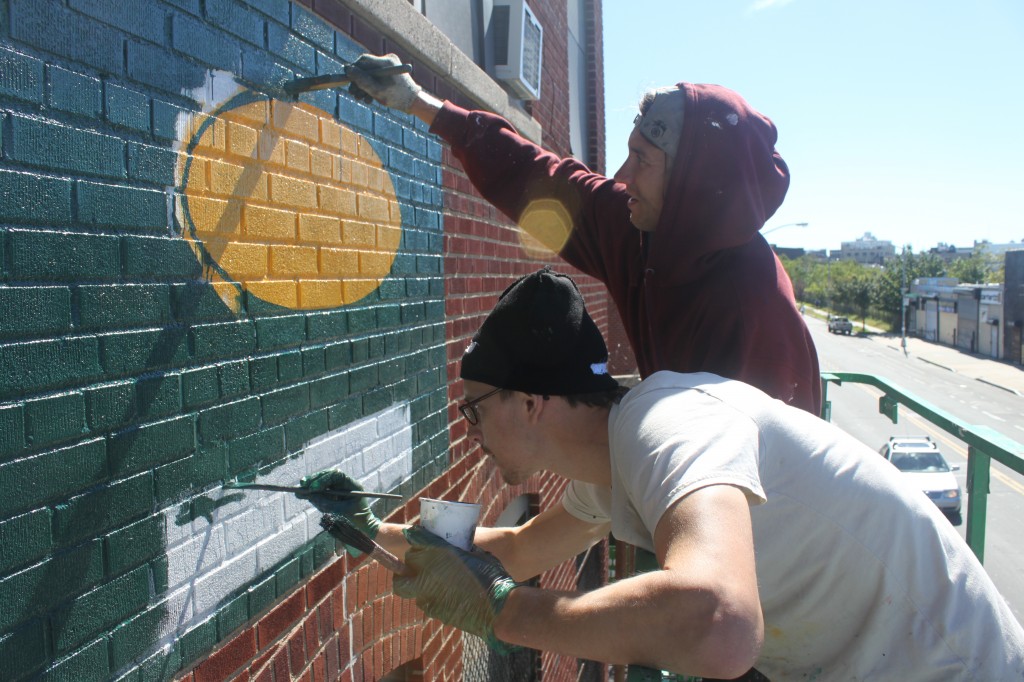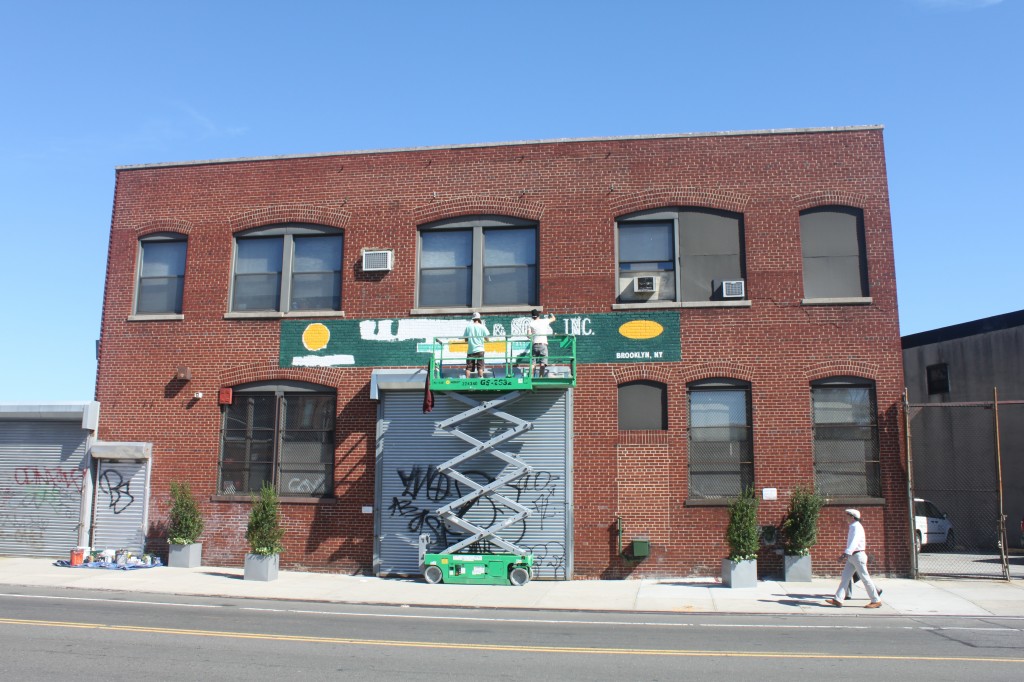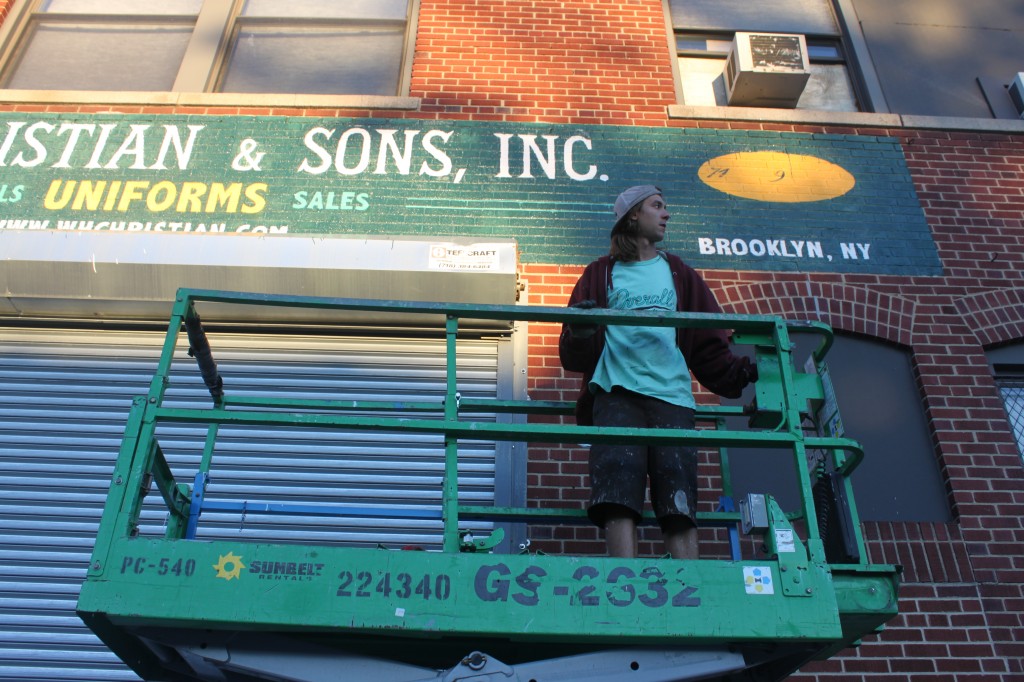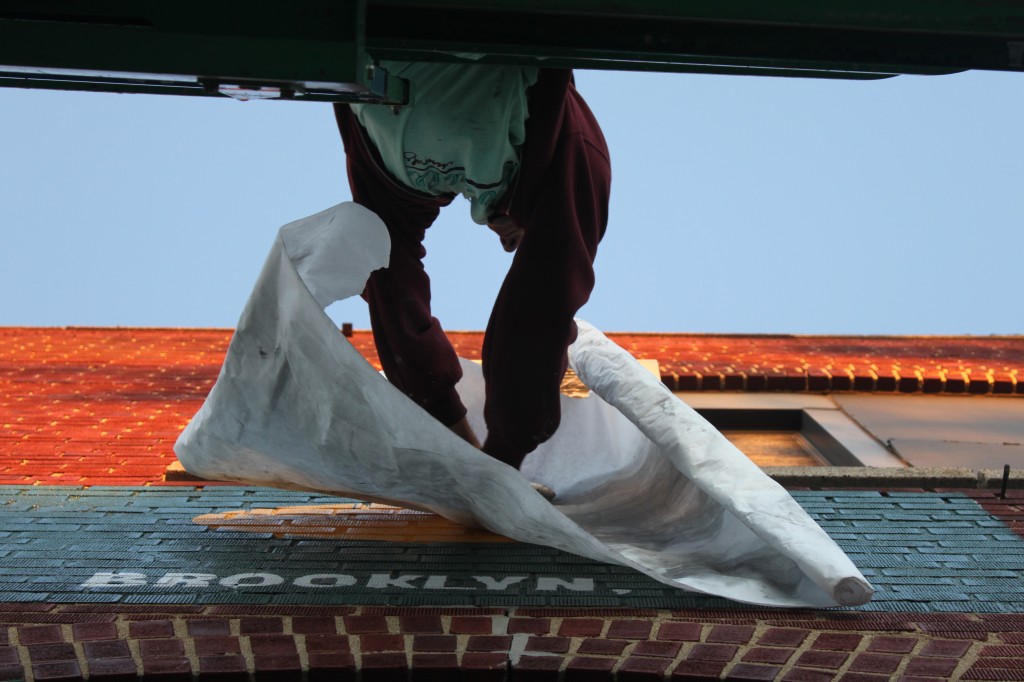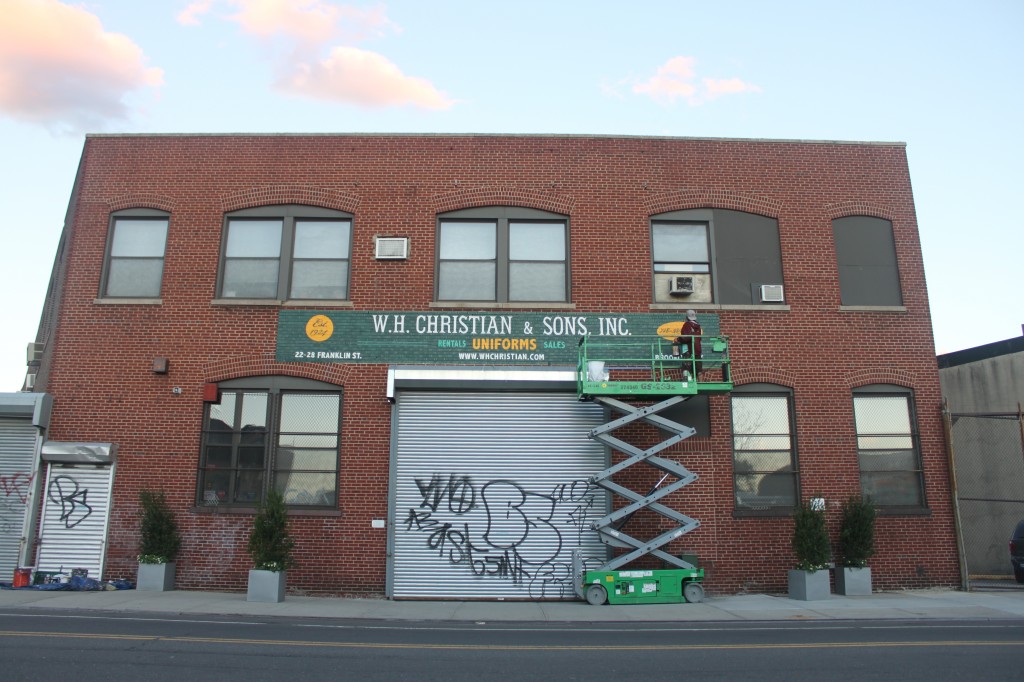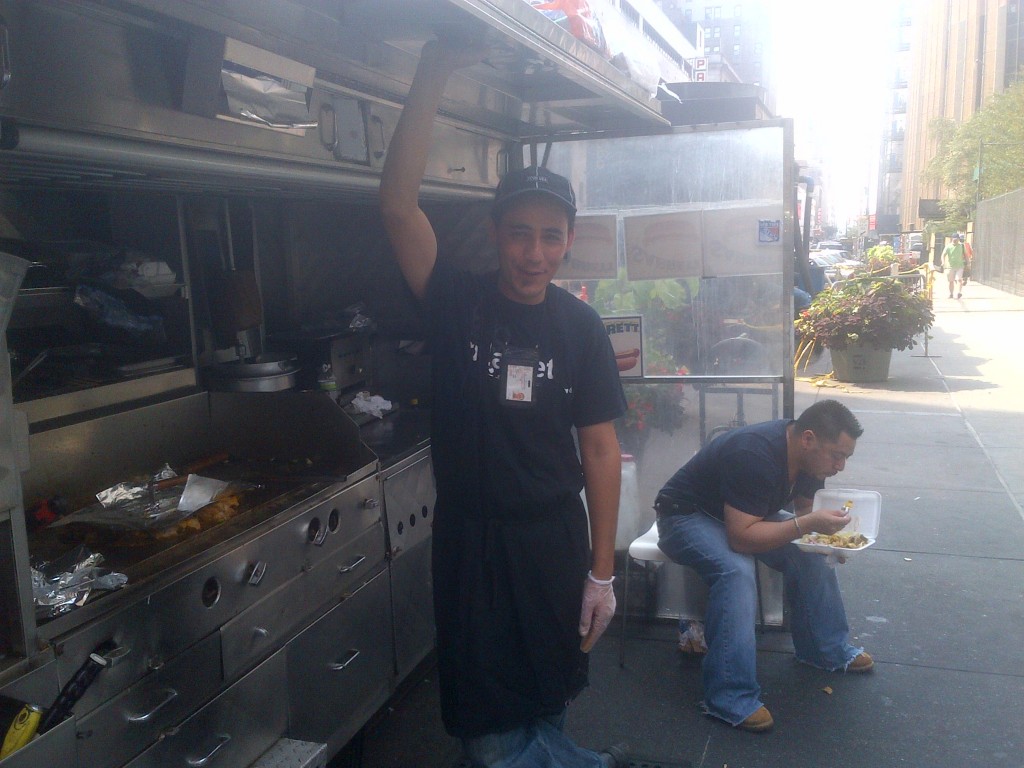Submitted for class on Nov. 11, 2012
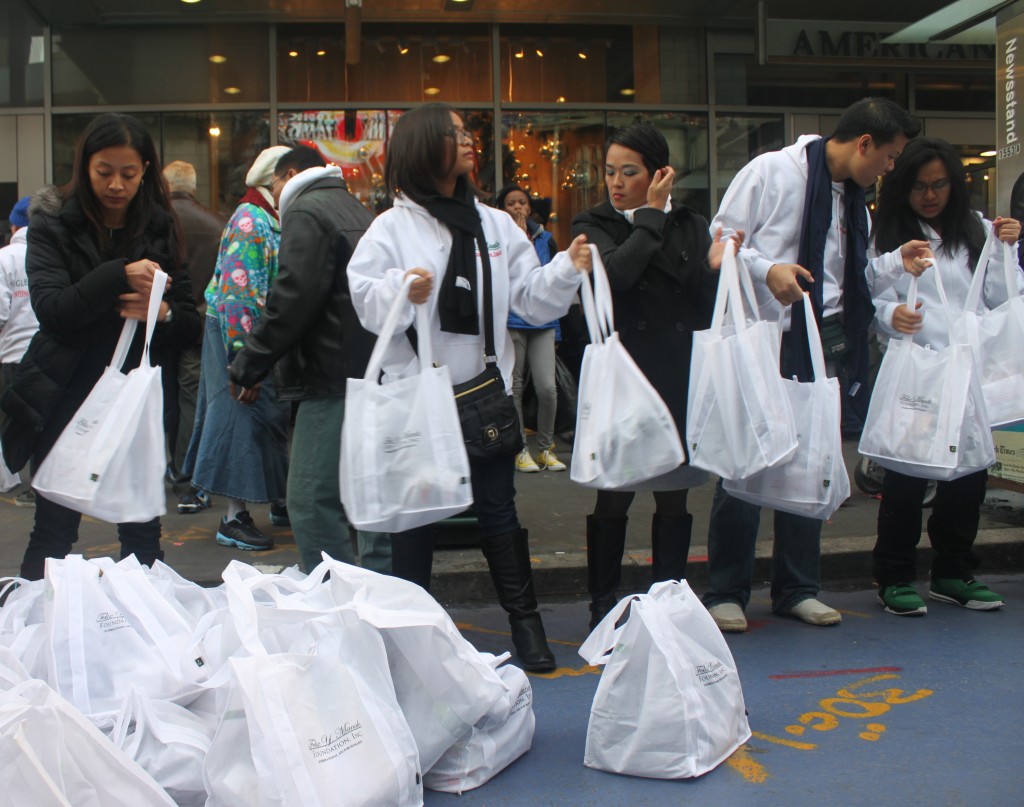
On the Broadway side of Father Duffy Square in Midtown, members of Iglesia ni Cristo, a Philippines-based church, form a fire line to distribute tote bags containing supplies and vouchers to homeless city residents on Tuesday, Nov. 20. (Philippe Theise)
Members of Iglesia ni Cristo, a Philippines-based church with congregations in New York, New Jersey, and over half the fifty states, assembled in Father Duffy Square in Midtown yesterday to celebrate their church and promote recognition of its foundation’s gifts to local charities.
The Felix Y. Manalo Foundation, so named for Iglesia ni Cristo’s founder, donated a total of $150,000 to the FDNY Foundation, the New York City Police Foundation, and the fund for the New York Health and Hospitals Corporation, or the Fund for HHC.
During the event, which the church dubbed “International Day for Humanity,” church members also handed out tote bags to homeless New Yorkers. The bags contained a fleece blanket, bottled water, toiletries, vouchers for use at local pharmacies, and the December 2007 issue of God’s Message, a church magazine.
FDNY Foundation President Jean O’Shay said that her organization’s share of the $150,000 will go towards helping the 800 fire department members that superstorm Sandy “seriously impacted.”
“So many [members] live in Gerritsen Beach, the Rockaways, Staten Island,” she said.
Joe Schick, executive director of the Fund for HHC, accepted two enlarged $25,000 checks, one each for Coney Island Hospital and Bellevue Hospital Center, from FYMF officials.
“Your gift is a gesture of powerful healing,” he told officials before a crowd that filled the inclined seating area above the Theatre Development Fund’s TKTS Discount Booth on 47th Street, as well as most of the square.

Members of Iglesia ni Cristo, a church based in the Philippines with local congregations in Queens, Long Island, and northern New Jersey, pray during a gathering in Father Duffy Square in Midtown on Tuesday, Nov. 20. (Philippe Theise)
Schick later said that the fund will spend the money on the hospitals’ staff, patients, and infrastructure, and noted that the Fund for HHC itself has donated to disaster relief efforts in Haiti, Japan, Mississippi, and Louisiana.
Many Iglesia ni Cristo attendees wore white sweatshirts, making the square look like a human mainsail from a southern perspective. As they alternately cheered and prayed, and as would-be theatregoers waited in line for bargain tickets, homeless men and women also waited to receive the totes.
Musa Fudge, who lives at a shelter on Ward’s Island, found out about the event at the Church of the Holy Apostles at 296 9th Avenue in Chelsea.
“It’s fabulous that people come together, not just to receive something material, but the spiritual aspect,” he said.
Carlos Johnston and Gabriel Tucker also said they appreciated the vouchers and supplies.
Tucker, also a resident on Ward’s Island, said that he had just started a job in security in Manhattan when Sandy hit. The MTA bus that took him into Manhattan was out of service for four days, and it took him even longer to get back to work.
“Every little thing helps now. [It’s] money I don’t have to spend to replace some things,” Tucker said.
“I follow Islam myself, but I do not knock any religion, as long as it backs God,” he said.
Near the stage, Glicerio “Sergie” Santos III, one of four FYMF directors, said that foundation members “saw the tragedy back home,” and wanted to help New York City’s first responders and homeless population.
Rommel San Pedro, an Iglesia ni Cristo minister in Burlingame, CA who attended the event, estimated the crowd at between five and seven thousand.
Smiling, he also guessed that it might constitute “the most amount of Filipinos [ever] gathered in Times Square.”


